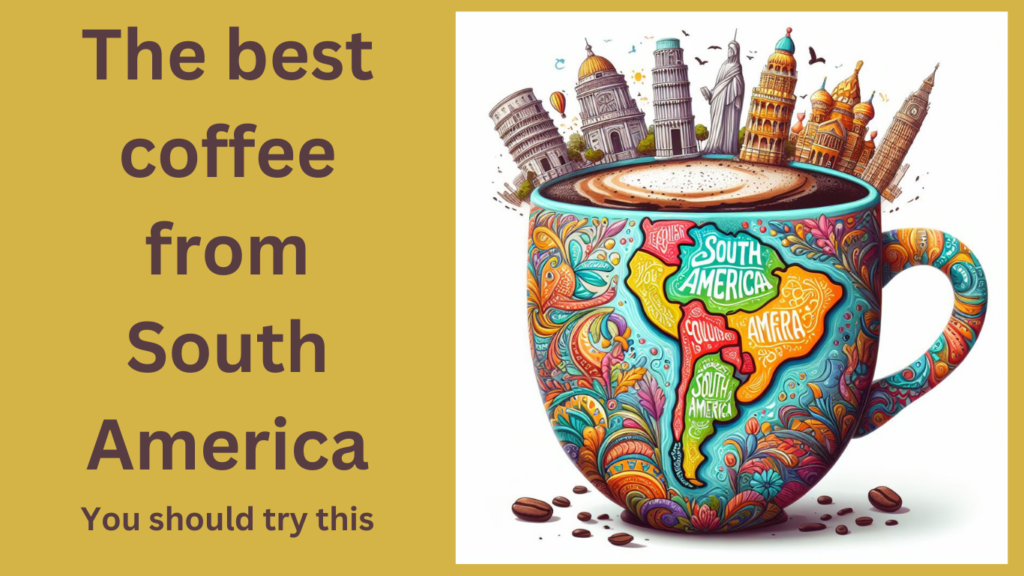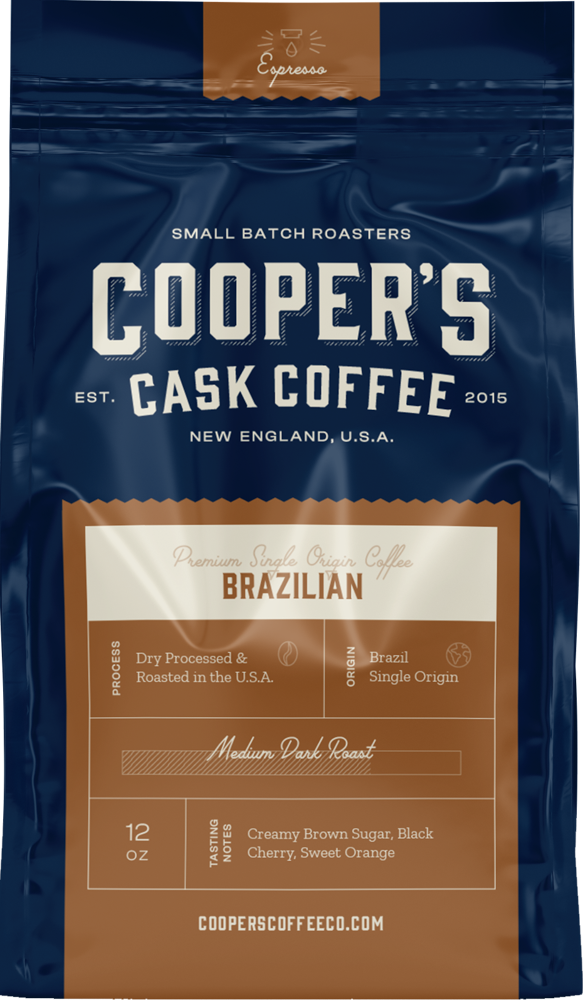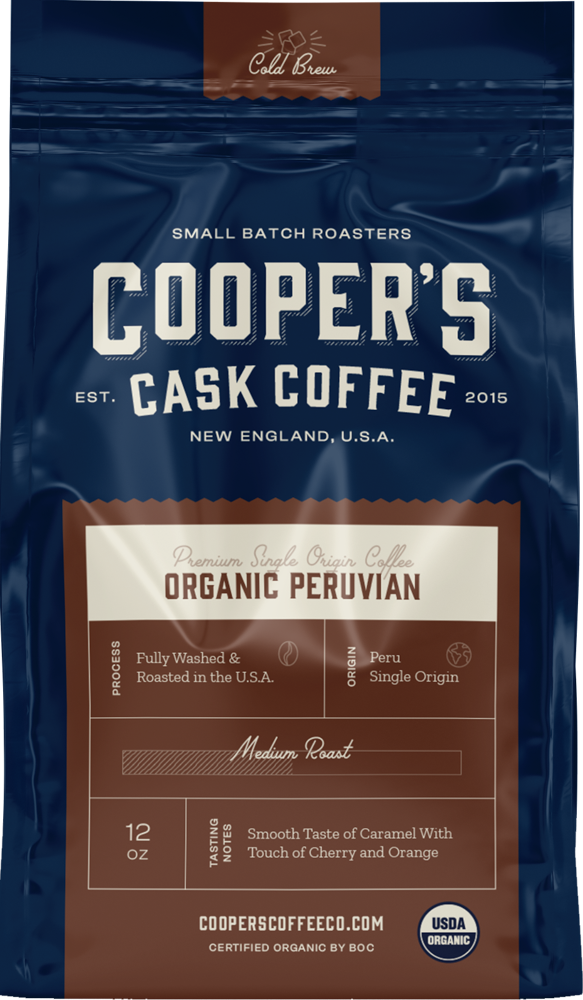As the fourth largest continent and one of the largest producers of coffee in the world, I have to give you a little overview of the best coffee from South America, as well as a little history on how their coffee production began.
Please note, some of the links are affiliate links. Meaning, it you follow the links and buy a product I get a small commission. This does however not add any cost to you. Read more about it in my privacy policy.
In this blog post we will look at the following:
Brief Overview
Now, I’m not much of a geography fan, so don’t expect geographic details here! However, an interesting way for me to even know where South America is on the map is by its shape.
Have you ever noticed that the continent is shaped like an upside-down triangle?!? Don’t take my word for it… just look at the map below:

Looking at the map, some countries pop out as familiar, like Venezuela, Brazil, and Colombia. Others such as Uruguay, Guyana, Suriname, and French Guiana may not be as familiar.
Then there are countries such as Bolivia, Peru, Chile, and Argentina which may sound familiar but, if you are like me, you may not have known that they are countries in South America.
Coffee from South America – A Brief Look at How Production Began

It is said that coffee production began in South America in the 18th century, when the Europeans brought coffee seeds to French Guiana and Suriname. Of course, the climate, and landscape made the region ideal for farming this precious commodity, and so the farming of coffee spread throughout the region.
I have already made a series about the coffee history for you to read later. But in short, here is what my research on the matter revealed:
The plant was first cultivated commercially across the Red Sea from Ethiopia, in Yemen. And it was from Yemen, rather than Ethiopia, that the coffee plant was first distributed across the globe. The Dutch took it to Java in about 1690. From Java, they took a single plant to Amsterdam.
This single tree was cultivated at the Amsterdam Botanical Garden; in 1714 the magistrates of Amsterdam gave an offspring of this plant to Louis XIV of France. In 1718 the Dutch took one of these offspring to Dutch Guyana (Suriname), in the Caribbean.
In the 1720s, the French introduced descendants from their plant to Martinique. In the following decades, the progeny of these two introductions were propagated and circulated across the tropical Americas.1
Oxford Research Encyclopedias
It is also interesting to note that South America is sometimes interchangeably referred to as Latin America, though Latin America includes other countries that are not a part of South America (namely Mexico, countries in the Caribbean, and Central America) – just FYI, in case you tried researching it and Latin America came up.
A fascinating beginning for coffee from South America… Here you can read more about How did coffee get to South America. Well, as interesting as the history lesson may be, it’s now time to find out about the actual coffee from South America! Keep reading friends…
What makes coffee from South America good?

Adequate rainfall, ideal temperature, fertile soil rich with nutrients…. planting quality coffee beans… attention to details when harvesting the coffee cherries… So many factors have a bearing on the quality of coffee, and for South American coffee, they must have an excellent combination of these factors why they can be among the top producers in the world!
You will find many single-origin beans options in the South American coffee market like this coffee from Peru. This simply means that the coffee beans come from one country like this one from Brazil only, or even from one farm.
This is important for the integrity of the flavor profile, as soils in different regions produce beans with very different tastes. And coffee lovers and enthusiasts know that the flavors and undertones are a huge part of the desired coffee experience – taste matters in a very big way!
Oh, speaking of coffee lovers. Here is my list of the best coffee gifts for coffee lovers over 100!
The impact of the freshness
The freshness of the roast and grind can also impact the strength and taste of coffee. Oxidation will affect it more based on how it is stored. And a 7-day-old roast will obviously have better flavor and strength than a 7-month-old one.
The fact that South American coffee farmers have access to adequate processing facilities in fairly close proximity compared to other producers, also gives them a competitive advantage on quality.
The Best Coffee from South America
I’ve been searching far and wide, trying various blends to come up with the best coffee from South America for you. Here are my top choices by country:
Coffee from South America: Brazil
Brazil – Brazil is said to be the worlds largest producer of coffee. Typically, coffee beans (Arabica and Robusta) are stripped of the fruity flesh within days of picking the cherries, then the seeds are washed to remove impurities before drying.
However, Brazil processes coffee cherries by drying them in the sun with the fruity flesh in tact, instead of using the washing method. As interesting as this is, it can result in less predictable flavor profiles. But slightly more sweet tasting due to the sugar in the fruit.
Here is one of my top brands, Coopers.
If you’re looking for a smooth and flavorful espresso that stays true to its source, Brazil, you might want to try Cooper’s Cask Coffee Brazilian Medium Dark Roast Espresso.
This coffee is made from single origin Brazilian beans that are dry processed and roasted in small batches in the U.S.A. The roasting process brings out the unique notes of creamy brown sugar, black cherry, and sweet orange that make this espresso stand out.
Cooper’s Cask Coffee is a family-owned company that specializes in barrel-aged coffee and espresso beans, as well as other single-origin and organic coffees from around the world.
You can order their Brazilian Medium Dark Roast Espresso online here.
Whether you enjoy it as a shot or in a latte, this espresso will surely delight your taste buds and give you a boost of energy.
Why not try this Brazillian coffee and tell me what flavors you detect by commenting below!? Here are more facts on The Best Coffee From Brazil
Coffee from South America: Colombia
Colombia – Colombian coffee is of single origin, and can be described as medium to full-bodied with mild acidity. It is rich in flavor – with notes of caramel, nuts, and cocoa.
Colombia offers a range of coffee flavor profiles, depending on where the coffee is grown. They use mainly Arabica and Castillo beans to produce high-quality specialty coffee via the washing method of production.
Here is another one I have strong faith in, Fabula.
For a low-acid and organic espresso that is gentle on your stomach and the environment, you might want to try Fabula Coffee Espresso1.
This espresso is made from 100% Arabica beans that are grown in Colombia and roasted in the U.S.A. The beans are certified organic by the USDA and non-GMO verified by the Non-GMO Project.
The espresso has a rich and smooth taste, with hints of chocolate, caramel, and nuts. Fabula Coffee is a company that cares about quality, health, and sustainability. They use eco-friendly packaging and donate a portion of their profits to support education and clean water projects in Colombia.
You can order their espresso online and get a 10% discount on your first purchase here. Whether you prefer it black or with milk, this espresso will surely satisfy your coffee cravings and make you feel good.
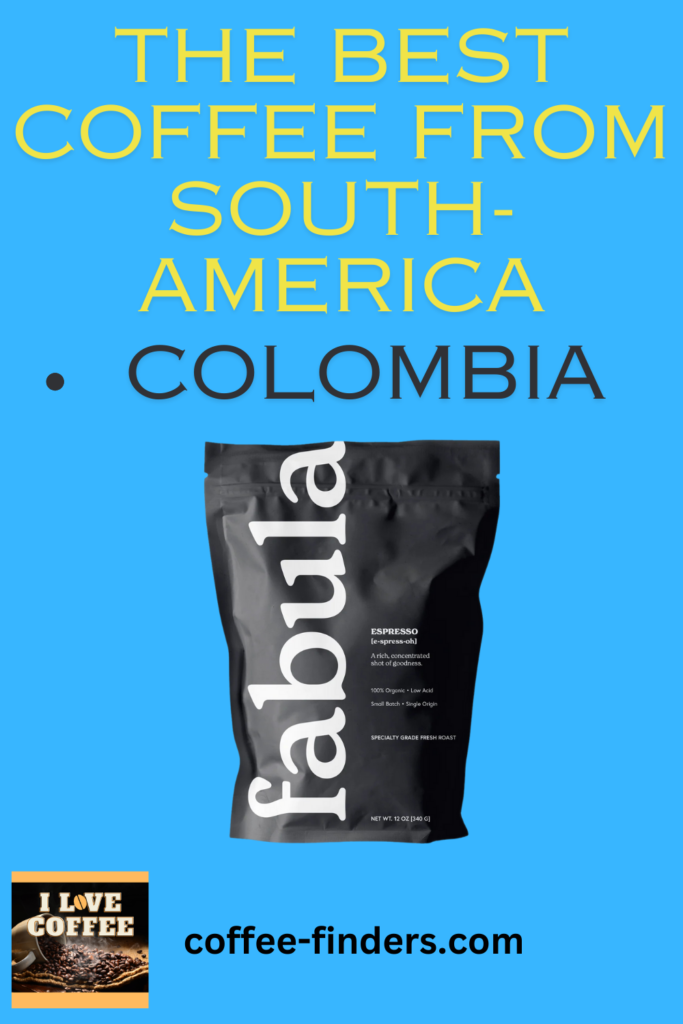
For one of the best coffee from South America, give this Colombian brand a try.
Coffee from South America: Peru
Peru – Peruvian coffee boasts a sweet gently finish, with fruit and nut undertones. It is of single origin and certainly is one of the best coffee from South America. It is medium-bodied, with medium acidity, but certainly full of flavor! I love this brand.
Even without adequate processing facilities, Peru manages to be the third largest coffee producer of coffee from South America… imagine that!
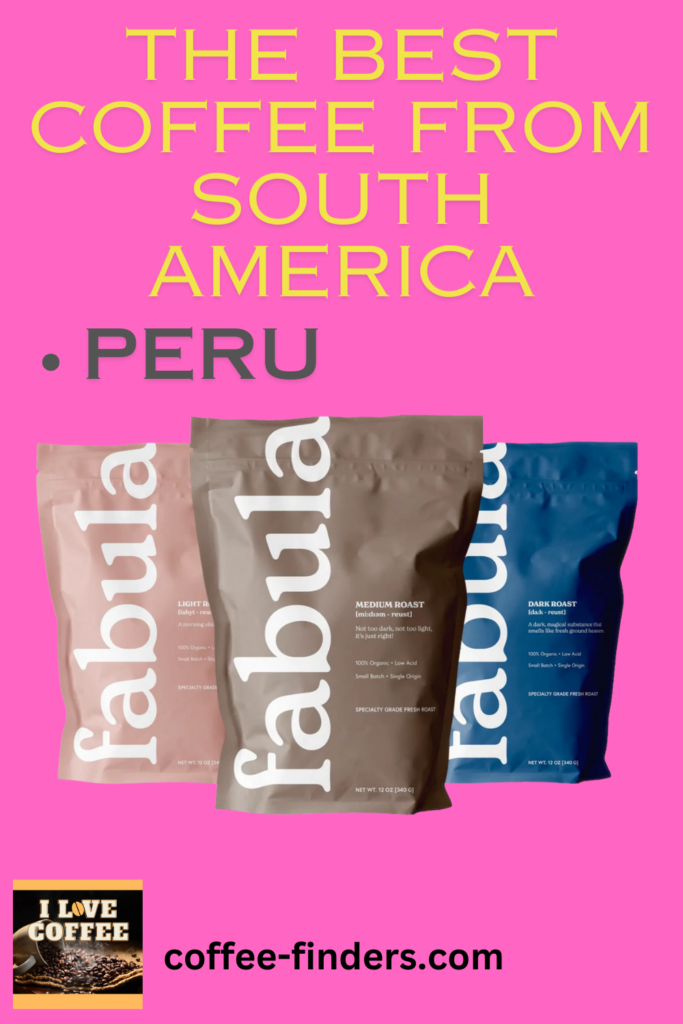
Here is a Peruvian coffee for you – Fabula Coffee Three Roasts Variety Pack:
If you want to explore the diversity of flavors and aromas that Peruvian coffee has to offer, you might want to try Fabula Coffee Three Roasts Variety Pack.
This pack includes three different roasts of 100% Arabica beans that are grown in Peru and roasted in the U.S.A. The light roast has a floral and fruity taste, the medium roast has a chocolate and caramel taste, and the dark roast has a nutty and smoky taste.
You can enjoy each roast separately or mix them together to create your own blend. Fabula Coffee Three Roasts Variety Pack is a great way to sample and compare different regions and roasts of Peruvian coffee.
You can order it online and get a 10% discount on your first purchase here. Whether you brew it in a French press, a drip machine, or a pour-over, this variety pack will surely impress you and your guests.
And here is a cold brew version for you.
Cooper’s Cask Coffee Peru Robust and Complex Cold Brew:
For a refreshing and organic cold brew that is easy to make and enjoy, you might want to try Cooper’s Cask Coffee Peru Robust and Complex Cold Brew.
This cold brew is made from 100% Arabica beans that are grown in Peru and roasted in the U.S.A. The beans are certified organic by the USDA and have a medium roast level that brings out the smooth caramel, cherry, and orange flavors. Cooper’s Cask Coffee Peru Robust and Complex Cold Brew is coarsely ground and ready to brew in your preferred cold brew maker.
You can order it online here. Whether you drink it straight or with ice, milk, or sweetener, this cold brew will surely quench your thirst and awaken your senses.
Short selection of the best coffee from South America as found on Amazon
As always, I try to find the coffee from several sources. so here are some of the ones I found on Amazon:
The Conclusion of the Matter – Best South American Coffee
It is said, and I say too, that this upside-down triangle has the best single option, specialty coffee the world has to offer! But don’t take my word for it. Try these options that I have mentioned, as I believe they are the best coffee from South America, hands down.
I’m excited to hear your thoughts on my coffee choices too, so remember to leave some comments below Enjoy your South American java experience!

